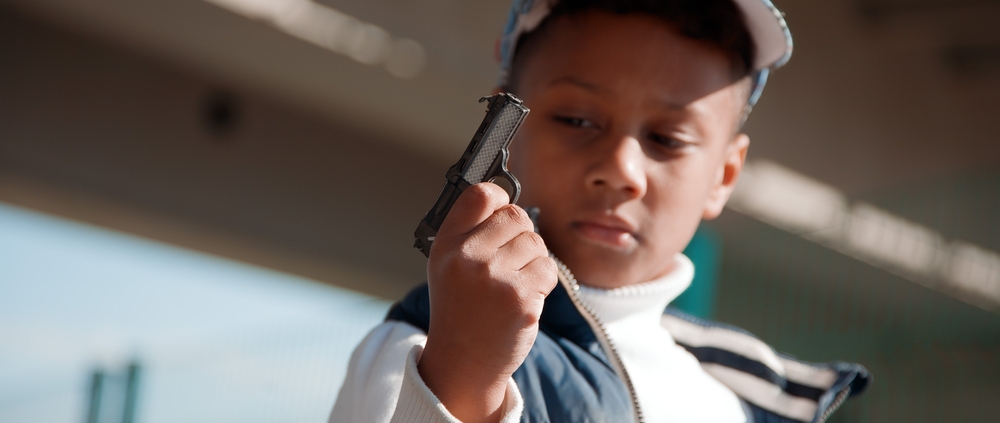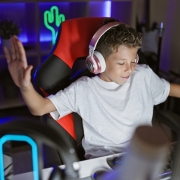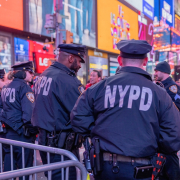Discouraging Non-White Parents and Relatives from Purchasing Toy Guns or Similar Toys That Could Be Mistaken for Weapons
By Esther Claudette Gittens
In communities where law enforcement interactions can escalate due to misidentifications, toy guns and other weapon-like toys pose a unique danger. These toys, while often viewed as innocent instruments of play, have led to tragic consequences when mistaken for real weapons by police officers. Non-White families, whose children are disproportionately affected by implicit bias and systemic inequalities in law enforcement practices, face heightened risks. This article explores why non-White parents and relatives should avoid purchasing toy guns or similar toys for their children and offers actionable strategies to mitigate these dangers. Read more at www.askthelawyer.us. To read the complete analysis in our publication, click here, and on our civil rights blog, click here.
- The Real Dangers of Realistic Toy Guns
Toy guns have become increasingly realistic in appearance, making it difficult for even trained professionals to distinguish them from actual firearms in high-pressure situations. These toys are particularly dangerous when carried or played with in public spaces, where misidentifications can occur.
1.1 High-Profile Tragedies
Several incidents highlight the devastating consequences of mistaken identity with toy guns, including:
- Tamir Rice (2014): A 12-year-old Black boy was shot and killed by Cleveland police officers who mistook his toy gun for a real weapon. The officers acted within seconds of arriving on the scene, leaving no time for clarification or de-escalation.
- Andy Lopez (2013): A 13-year-old Latino boy in California was fatally shot by a sheriff’s deputy who believed the toy AK-47 he carried was real.
These cases underscore the risks of allowing children to play with toy guns in public spaces, particularly for non-White families, who are often disproportionately affected by law enforcement actions.
- The Role of Implicit Bias in Law Enforcement
Implicit racial biases—unconscious associations that influence decision-making—can impact how law enforcement officers perceive threats. Research has shown that Black and Latino individuals are more likely to be perceived as dangerous, even when carrying harmless objects.
2.1 Misperceptions of Age and Threat
- A study published in The Journal of Personality and Social Psychology found that Black children are often perceived as older and less innocent than their White counterparts. This misperception increases the likelihood of harsh treatment or misidentification by law enforcement.
- Latino youth similarly face heightened scrutiny, with stereotypes about gang affiliation or criminal behavior influencing police responses.
2.2 Split-Second Decisions
In high-stress situations, officers may rely on implicit biases when deciding whether an object is a weapon. A realistic-looking toy gun in the hands of a non-White child could escalate an encounter, with potentially fatal results.
- Why Non-White Parents Should Avoid Toy Guns
While all families should be cautious about buying toy guns, non-White families face unique risks due to the intersection of systemic racism and law enforcement practices. Avoiding such toys can significantly reduce the potential for dangerous misunderstandings.
3.1 Risk Reduction
By not purchasing toy guns, parents and relatives can:
- Minimize the likelihood of law enforcement interactions escalating unnecessarily.
- Protect children from being wrongly perceived as threats.
3.2 Cultural Awareness
Choosing alternative toys also helps break the normalization of weapon-like play, fostering a safer and more inclusive environment for children to grow and thrive.
- Alternatives to Toy Guns
Parents and relatives have numerous options for toys that encourage creativity, physical activity, and social bonding without resembling weapons.
4.1 Safe and Engaging Toy Options
- Art Supplies: Crayons, paints, and drawing kits inspire creativity and self-expression.
- STEM Kits: Science, technology, engineering, and math-based toys promote problem-solving and curiosity.
- Sports Equipment: Soccer balls, basketballs, and jump ropes encourage physical activity and teamwork.
- Building Sets: LEGOs, magnetic tiles, or wooden blocks foster imaginative play and spatial reasoning.
4.2 Promoting Non-Violent Play
Parents can also encourage activities that focus on storytelling, role-playing, and cooperative games, which nurture empathy and collaboration.
- Educating Families and Communities
Creating awareness about the risks associated with toy guns is essential. Parents and relatives may not fully understand the potential consequences, especially if they have not experienced direct interactions with law enforcement.
5.1 Conversations About Safety
- Explain the Risks: Parents should talk to their children about why certain toys may be dangerous to carry or play with in public.
- Set Guidelines: Establish clear rules about acceptable toys and behaviors in public spaces.
5.2 Advocate for Community Change
Parents can work with community leaders, schools, and local organizations to:
- Educate families about the risks of realistic toy guns.
- Encourage retailers to stop selling toys that closely resemble real weapons.
- The Role of Policymakers and Retailers
Government regulations and retailer policies can play a crucial role in reducing the availability of realistic-looking toy guns.
6.1 Existing Laws
In New York State, toy guns must be brightly colored or feature a distinguishing mark to differentiate them from real firearms. However, enforcement and public awareness of these laws remain inconsistent.
6.2 Encouraging Retail Responsibility
Retailers should take proactive steps to:
- Remove realistic-looking toy guns from their inventory.
- Educate consumers about the risks associated with these toys.
- Addressing Pushback
7.1 Cultural and Historical Norms
Some parents may argue that toy guns are a harmless tradition or a rite of passage for children. However, these norms must be weighed against the unique risks faced by non-White children in today’s society.
7.2 Balancing Freedom and Safety
While personal freedom is important, it should not come at the expense of a child’s safety. Parents must prioritize choices that protect their children from potential harm.
- The Broader Impact of Avoiding Weapon-Like Toys
Avoiding the purchase of toy guns has implications beyond individual families. It contributes to a cultural shift that prioritizes safety and challenges the normalization of weaponry in childhood play.
8.1 Reducing Police Misidentifications
Fewer realistic-looking toys in circulation reduce the chances of law enforcement officers encountering ambiguous situations.
8.2 Promoting Community Safety
By advocating for safer toys, families help create a culture of non-violence and mutual respect, fostering trust between communities and law enforcement.
Conclusion
The risks associated with toy guns and similar toys are particularly acute for non-White children, who are more likely to face implicit bias and heightened scrutiny from law enforcement. By avoiding these toys, parents and relatives can protect their children from potential harm and contribute to a broader cultural shift toward safety and inclusivity. Through education, advocacy, and conscious consumer choices, families can help prevent unnecessary tragedies and ensure a safer environment for future generations.






Leave a Reply
Want to join the discussion?Feel free to contribute!